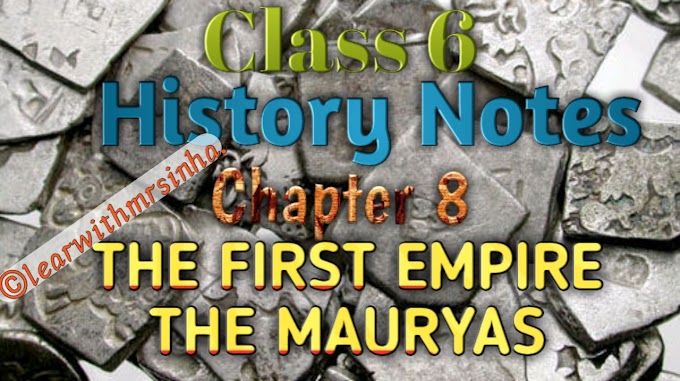UNDERSTANDING DIVERSITY
The main religions in India are Hinduism, Islam, Buddhism, Sikhism, Jainism, Christianity and Zoroastrianism.
The Indian Constitution recognizes the right of each citizen to practice any religion and develop their own one’s language and culture.
Culture consists of ideas, beliefs, customs, art, religion, music and dance. The food habits of the people, the festivals they celebrate, their art and handicrafts are all part of culture.
National Festivals –
- Independence Day (15th August),
- Republic Day (26th January) and
- Gandhi Jayanti (2nd October)
India has two major kind of dances – Classical and Folk.
- Bharatnatyam – Tamil Nadu
- Kathakali – Kerala
- Kathak – North India
- Kuchipudi – Andhra Pradesh
- Manipuri – Manipur
- Odissi – Odisha
UNITY AND DIVERSITY
Ancient Indian knowledge has been passed on by word of mouth. Stories with moral lessons were told through song, dance and drama. This is called the art of folk theatre. Mostly bases on seasons
- Bhangra – Punjab,
- Garba – Gujarat,
- Chhau – Bihar,
- Ghoomar – Rajasthan,
- Lavani – Maharashtra,
- Bihu – Assam
There are two main schools of classical music - the North Indian school is called Hindustani and the South Indian school is called Carnatic.
Indian folk music consists of traditional songs sung during festivals and weddings.
The earliest form of art, based on the teachings of the Buddha. Maniature art is seen in Pahari, Rajput and Mughal paintings. The stupas at Sanchi were built by Emperor Ashoka and the Taj Mahal by Shah Jahan.
Land and climate determine the dress worn by the people of an area.
The popular dresses in our country are salwar-kameez in Punjab, Ghaghara-kurta with an odhni in Haryana, Ghaghara-katchli in Rajasthan, lehanga-choli in Gujarat and a mundu-blouse in Kerala. Mens generally wear pyjama-kurta,churidar-kurta with an achkan or angarakha in Rajashtan. In Tamil Nadu, men’s lungis are called veshti and in Kerala they are called mundu. Phiran – long woolen kurta (Kashmir)
Progress in communication, transport and technology during the 20th century has enabled us to overcome geographical boundaries and has revolutionized our way of living. The world is linked as never before. Economies, societies and cultures have been connected through a global network, not only in India but throughout the world.
Globalization has resulted in spreading information and ideas. Economically speaking, it has increased money flow, investment and international trade. This has brought all the countries into a single giant world market.
KERALA
Kerala is a narrow strip of land between the Arabian Sea and the Western Ghats in the South-west corner of India. It is full of coconut trees and has beautiful beaches. Kerala has the highest rate of literacy. Women in Kerala hold a high position in society. People of many religions live together in harmony.
Hills and Valleys – Kerala has high mountains which have deep valleys, and are cove red with forests. Cash crops like tea, coffee and cardamom are grown on the mountain slopes on large farms called plantations.
Midland plains - In this region, the hills are not very steep. The valleys are wide and are dotted with paddy fields. The higher lands are hill slopes have plantations of rubber, fruit trees, tapioca and other cash crops like pepper.
Coastal belt – This belt is comparatively plain. Large rice or paddy fields and groves of coconut trees are found,
Backwaters - The backwaters are a peculiar feature of the state. They are a network of canals and lakes and are fed by as many as 38 rivers. The chief mode of transport is by boat.
Rivers – There are 44 rivers in the state, which begin from the Western Ghats. They are now being harnessed for power generation and irrigation.
The backwaters and the inland waterways have helped in the growth of the coir industry, which is the oldest traditional cottage industry in the state. Coir is made out of coconut husk and is transported through waterways. Fishing is a flourishing industry in several parts of the state. Kerala is famous for rosewood and sandalwood carvings, brass and bell metal lamps and gold jewellery.
Kathakali is a form of dance-drama and Mohiniattam is a classical dance form of Kerala. Kalaripayattu is a famous martial art form of this state.
Onam is the main festival of the stat. The snakeboat races during the festival are a popular tourist attraction. Magnificently decorated snakeboats take part in the boat race. The Sabarimala Ayyappa temple and the Bhagavati temple at Attukal are famous pilgrim centres in Kerala. The variety of life in Kerala can be seen in the religious and secular festivals which form an integral part of its cultural heritage.
Science Notes Class 6
LADAKH : A CASE STUDY
Ladakh is a part of Jammu and Kashmir in North India. It consists of two districts, Leh and Kargil. It is surrounded by two mountain ranges, the Karakaram in the north and the Great Himalaya in the southand by two parallel chains, the Ladakh Range and the Zaskar Range.
Ladakh is a land of high passes, a resting point for travelers on the ancient trade routes to Central Asia and beyond.
Stories based on the life of the Buddha are the main themes of the traditional theatre of Ladakh. It is an essential part of the Ladakhi heritage. Many villages have a Gompa or monastery, a comples of temples and prayer halls. Gompas are an important part of the lives of the people. These Gompas serves as places of worhip, meditation and as schools.
Some of the most famous fairs and festivals are celebrated around these Gompas. Losar is celebrated as their near. Shey Shrupla is celebrated to mark the bringing home of the harvest. Hemis Chheshu is the biggest summer festival held in Ladakh. This festival symbolizes the victory of right over wrong, good over evil. Many of the annual festivals of the Gonpas take place in winter. These take the form of dance-dramas. Lamas, dressed in colourful robes, wearing masks, perform here. Cham, the sacred masked danc e is performed on these occasions by monks dressed in brocade robes and masks. Long horns are blown accompanied by cymbals. Peoplecome from near and far to see these events.
Archery is an ancient sport of Ladakh. In Leh and its surrounding villages, archery festivals are held during summer. Polo, a game played here, differs in many respects from the international game of Polo. Traditionally, almost every mojor village had a polo-ground.
Ladakh has very limited sources of water. Items of daily use such as cooking pots and bowls, as well as agricultural implements are supplied by local vlacksmiths. Since products made from fresh milk are important and necessary, each family owns some goats, cows and dzos (yak-cow). Sheep are important in Ladakh because they produce pashmina wool. This wool is sold to traders from Kashmir. Ladakh is home to some rare animals. These include the Mountain Goat (ibex), the Snow Leopard, Brons Drong (wild yak), Kyang (wild horse), Nyan (large horned sheep), Musk Deer and the Tibetan Antelope.
*****







0 Comments